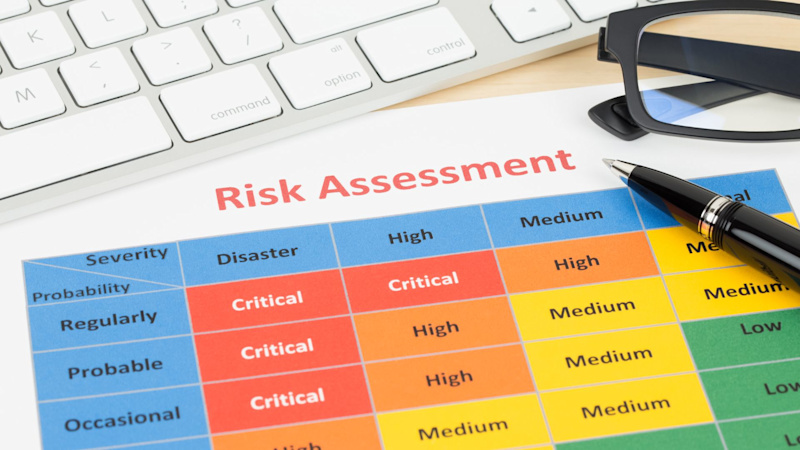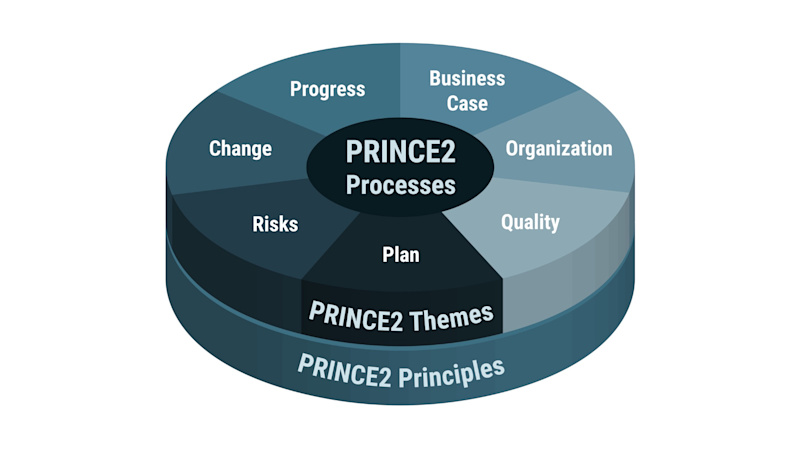In 2023, PeopleCert released a new version of PRINCE2. This marked a significant step forward, incorporating modern practices and addressing the evolving needs of project managers.
What critical differences do you need to understand for those transitioning between PRINCE2 version 6 and version 7? We share insights on this topic, how the changes in terminologies (especially for themes and issues) affect how we manage projects, and the training solutions available to get project managers updated with PRINCE2 version 7 knowledge and credentials.
PRINCE2: Version 6 vs 7
Let’s delve into the differences between PRINCE2 6th edition and the latest 7th edition. This widely adopted project management methodology has undergone significant enhancements in its evolution.
Here’s a breakdown of the fundamental changes:
Introduction of ‘People’ Element
In the 7th edition, PRINCE2 introduced a new element called ‘People.’ This addition complements the existing four elements: principles, processes, themes and tailoring.
Including the ‘People’ element emphasises the importance of human factors in project success. It recognises that effective project management involves processes, tools and the people who execute them.
Renaming of Themes to Practices
PeopleCert replaced the 7 PRINCE2 “themes” with “practices.” These practices encompass essential aspects of project management that need attention throughout the project lifecycle.
The new practices include:
Business case
Organising
Quality
Risk
Plans
Issues
Progress
New Management Approaches
PRINCE2 7th edition introduced three (3) additional management approaches that guide the changing requirements of project management. These include:
Data and Digital Management: Addressing the growing importance of data-driven decision-making and digital transformation. Studying this approach equips you with the tools to keep your projects current in the digital era.
Commercial Management: Focusing on financial aspects, contracts and procurement
Sustainability Management: Emphasising environmental and social responsibility. PRINCE2® 7 incorporates sustainable practices.
Change Management Concepts
Does PRINCE2 7 have a change management approach? The 7th edition acknowledges the critical role of change management. It emphasises handling changes effectively within the project context.
In PRINCE2 7, change management is ‘the means by which an organisation transitions from its current state to the target state’. The project initiation document outlines this approach.
Project management volunteer and mentor Frank Turley explains this change management approach further in his open-source guide. Project managers are encouraged to consider several vital aspects as part of this process.
Changes Delivered by the Project - Project managers should identify the changes the project will deliver.
Skills and Capabilities Needed - Assess the skills and capabilities required by the project team to execute the proposed changes successfully.
Impact on Other Areas - Consider other areas of the organisation that may be affected by the project.
Stakeholder Relationships - Identify relevant stakeholder relationships that must be considered during the transition.
Smooth Transition Methods - Figure out the best methods to ensure a smooth transition from the current state to the desired end goal.
Resource Requirements - Understand the resources needed to facilitate the change.
Effective change management using PRINCE2 7 can drive organisational growth, enhance communication, and increase buy-in and engagement from all stakeholders—the project team, senior leadership, other employees, partners, and customers.
Some Notes on Exam Structure Changes
When taking the exam, the focus is now on testing the learner’s knowledge and its application rather than the power of recall and memorisation.
According to AXELOS, from a training perspective, PRINCE2 7 removes the need to apologise for what isn’t covered in the method because many key elements are now included. The material covered in this version is exciting and compelling, and it gives trainers the mandate to discuss modern project management techniques.
While this approach is well-defined, adapting it to the specific context of your project and organisation is essential. PRINCE2 has always advocated tailoring, making the guidance work in your organisation or project.
However, to provide more context, the latest inclusion of project scenarios. This offers a better idea of applying the principles, practices and processes. For many learners, this is a much more pragmatic approach.
To reflect this pragmatic approach, PeopleCert made minor adjustments to the number of exam questions.
The core of PRINCE2 training remains
Despite these changes, the core of the method remains. When you review its principles, they are still unchanged.
What are the seven (7) processes of PRINCE2?
Continued business justification
Learn from the experience
Defined roles and responsibilities
Manage by stages
Manage by exception
Focus on the product
Tailor to suit the project
The seven processes, sometimes called the seven stages, stay largely the same.
What are the seven (7) processes of PRINCE2?
Starting up a project
Directing a project
Initiating a project
Controlling a stage
Managing product delivery
Managing a stage boundary
Closing a project
PRINCE2 Risk and Issue Management
Earlier, we discussed how PeopleCert renamed the seven “themes” with “practices.” Risk and issues are part of these new practices. As students learn about PRINCE2 version 6 vs. 7, many ask about PRINCE2 Issue Management and Risk Causes. We share some insights here.
PRINCE2 Issue Management
PRINCE2's issue definition is primarily focused on changes within the project. An issue can be a request for change, an out-of-scope specification or a problem or concern. These problems can be related to matters like the availability of materials, staff performance, or stakeholder communications, which can mean changes in project scope or impact the output's speed and quality.
To address this crucial aspect of the methodology. Project managers can use a few tools:
The Issue Register captures and keeps track of all formal issues on a bird’s eye level. It includes columns for Issue ID, Issue Type, Date Raised, Raised by, Description, Current Status, and Close Date.
An Issue Report gives a granular description of one or more issues. You can create one when an issue is first registered in the Issue Register. You can update it as the team examines the issue, proposes solutions and selects the best option.
What is a Risk Causes in PRINCE2?
Not all risks are considered harmful, and some problems are good to have. Regardless, they need to be discussed and addressed. Positive risks can arise from a potential upcoming policy change that could benefit your project. However, an adverse risk could be a possible reduction in the budget.
In PRINCE2, a risk cause is a source of risk. And a risk is defined as an uncertain event or set of events that, should they occur, will affect the achievement of project objectives. Risks can be both positive and negative for a project. They are quantified by likelihood and impact, allowing for effective management.
Get up to speed with PRINCE2 7
Understanding the differences between PRINCE2 versions and the issue management process is essential for effective project management. You can access the Transition to PRINCE2® 7th Edition Practitioner course through Lumify Work. It provides a pathway to Project Management professionals certified in the earlier version (PRINCE2 6th Edition) and would like to understand the changes introduced in the 7th Edition.
Lumify Work (formerly DDLS Training) is the largest corporate IT and process training provider in APAC. We have been delivering Project Management training courses since 1999 for the IT industry and top 100 ASX corporations.
Lumify Work is an Accredited Training Organization with Gold status for PeopleCert courses and certifications including PRINCE2.
PeopleCert is one of the leading players in the global certification industry, partnering with multinational organisations and government bodies to develop and manage globally recognised certification schemes. PeopleCert has delivered millions of exams in over 150 countries. And is the sole Examination Institute for delivering Axelos Accreditation and Examination services worldwide.
We have 10 fully equipped training campuses (with 60 classrooms) located in key business centres around Asia Pacific. You can book and sit a PRINCE2 course in Sydney, Melbourne, Adelaide, Brisbane, Perth and Canberra in Australia.
With Lumify Anywhere, students can undertake these studies on-site or online – allowing flexible delivery to suit their personal needs and schedule.
Access our guide to project management frameworks to learn which one can support you as a leader in sustainability. You can also enquire with us about a project management course today.







